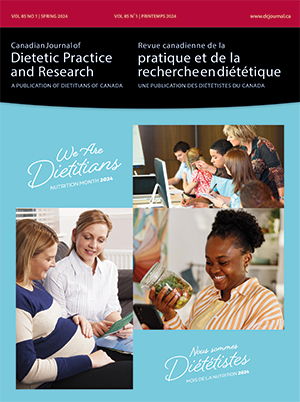Abstract
Olo nutritional follow-up care offers vulnerable pregnant women food vouchers, multivitamin supplements, tools, and nutritional counselling to support healthy pregnancy outcomes.
Purpose: To evaluate the contribution of Olo follow-up care to nutritional intakes and eating practices, as well as to assess the programme-related experience of participants.
Methods: Participants (n = 30) responded to questionnaires and web-based 24-hour dietary recalls and participated in a semi-structured interview (n = 10).
Results: Olo follow-up care reduced the proportion of participants below the recommended intake for groups for many micronutrients, with the greatest reduction for folate (by 96.7%), vitamin D (by 93.3%), iron (by 70.0%), calcium (by 50.0%), and zinc (by 30.0%), mainly due to the prenatal multivitamin supplements. Most participants (96.7%) did not follow Olo’s typical recommendations but, if they had, hypothetically they would have consumed an average of 746 additional calories per day and be above the recommendations for excessive intakes of folic acid and iron (100% and 33.3%, respectively). More than half of the participants were moderately to severely food insecure. Olo contributed to reducing the impact of isolation and increased food accessibility and budget flexibility among participants.
Conclusion: Olo follow-up care helped reduce the proportion of women below the recommended intake for micronutrients, but revising the food offered and strategies to address food insecurity may be necessary.
Résumé
Le suivi nutritionnel Olo offre aux femmes enceintes vulnérables des coupons alimentaires, des suppléments de multivitamines, des outils et du counseling nutritionnels pour favoriser des issues de grossesse positives.
Objectif. Évaluer la contribution du suivi Olo aux apports nutritionnels et aux pratiques alimentaires, ainsi qu’exposer les expériences du programme telles que vécues par les participantes.
Méthodes. Les participantes (n = 30) ont répondu à des questionnaires et des rappels alimentaires de 24 heures en ligne et ont participé à un entretien semi-structuré (n = 10).
Résultats. Le suivi a permis de réduire la proportion de participantes sous les apports recommandés pour les groupes pour de nombreux micronutriments, notamment pour le folate (de 96.7 %), la vitamine D (de 93,3 %), le fer (de 70,0 %), le calcium (de 50,0 %) et le zinc (de 30,0 %), principalement en raison de l’utilisation de multivitamines prénatales. La plupart des participantes (96,7 %) n’ont pas suivi les recommandations Olo, mais si elles l’avaient fait, elles auraient hypothétiquement consommé en moyenne 746 calories supplémentaires par jour et seraient au-dessus des recommandations d’apports excessifs en acide folique et en fer (100 % et 33,3 %, respectivement). Plus de la moitié des participantes étaient en insécurité alimentaire modérée à sévère. Olo a contribué à réduire l’impact de l’isolement, ainsi qu’à augmenter l’accessibilité des aliments et la flexibilité budgétaire chez les participantes.
Conclusion. Le suivi Olo a contribué à réduire la proportion de femmes sous les apports recommandés en micronutriments, cependant, il y aurait lieu de revoir les aliments proposés et les stratégies pour contrer l’insécurité alimentaire.



